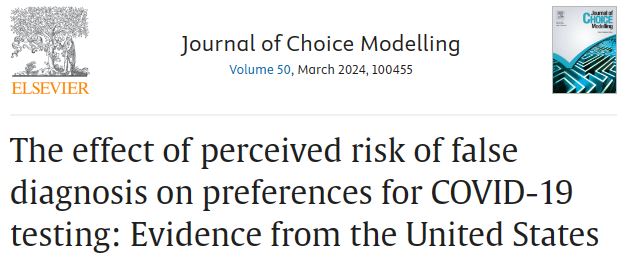Tomás Rossetti, Ricardo A. Daziano
Abstract
At-home antigen (rapid) tests have been successfully deployed in many countries to quickly detect COVID-19 cases. Whereas antigen tests have multiple advantages, they tend to have higher rates of false diagnosis than polymerase chain reaction (PCR) tests. Since individuals tend to process risk non-linearly, an ad-hoc method is required to adequately assess preferences for test features. In this paper, we propose a methodology based on random utility maximization and elements of prospect theory that produces willingness-to-pay estimates for different test attributes while accounting for differences between objective and perceived probabilities of false positive or negative results. We use this methodology to analyze stated preference data for COVID-19 tests in the United States. Results show that, on average, low probabilities were underestimated and mid-range probabilities were overestimated. We also found that false positive results were more burdensome than false negative outcomes, which shows that there is a degree of willful ignorance (Ehrich and Irwin, 2005) in our sample. Finally, our findings indicate that respondents tended to prefer tests with faster turn-around times and less invasive collection methods. In a case study, we show how our results can be used to assess pricing for a given test.
